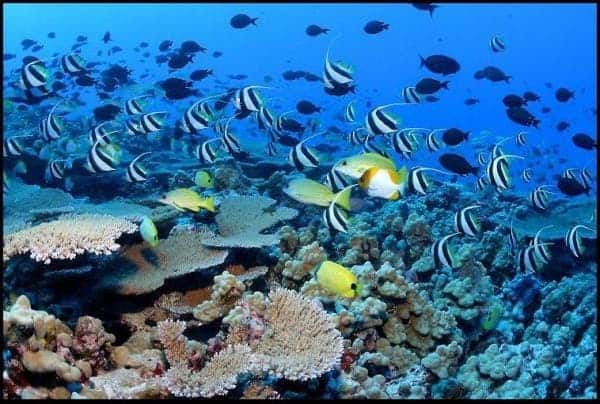A disease called black band coral disease is affecting nearly half of the reef sites researchers have surveyed in waters off Kauai and threatens to destroy Hawaii’s reefs, according to the state Department of Land and Natural Resources.

The disease was first identified in 2004, and rose to outbreak levels in 2012. This is the first outbreak in Hawaii, and authorities are worried about the lack of ways to deal with it.
Black Band disease was first observed on reefs in Belize in 1973 by A. Antonius, but it wasn’t really understood and explained back then. It’s caused by a bluegreen alga and affects 42 species of coral in a worldwide distribution. The only known reservoir is within cyanobacterial biofilms that are present on sediments in depressions of healthy black band disease susceptible corals.
Christina Runyon, one of the lead researchers of the disease has spent the last two years surveying reefs around Kauai. Black band disease was found at 23 of the 47 sites, she said, with hotspots on the north and east sides of the constantly eroding island. So far, the disease hasn’t been reported on other islands, but there’s no reason to believe it won’t do so in the near future – especially with constantly warming waters.
“We also have been able to see that there’s a trend between higher temperatures and this disease prevalence, where you see more of this disease when temperatures are warm,” she said. “This is concerning to us because of the predictions for sea surface temperatures to be higher this year than last year.”
However, even if the disease does spread, there is reason to be optimistic – researchers have successfully tested an experimental treatment, using a putty-like substance over the coral lesions to smother the disease.
“This is a Band-Aid,” Runyon said. “What we need to do is clean up our watersheds.”
Coral health is important for Hawaii not only culturally and environmentally, but also economically. Corals are under huge stress due to rising sea temperatures and ocean acidification.






